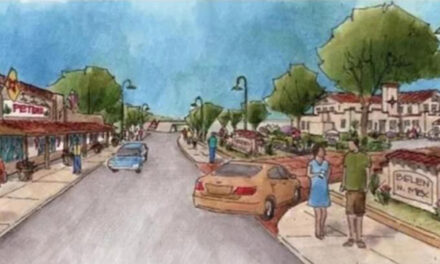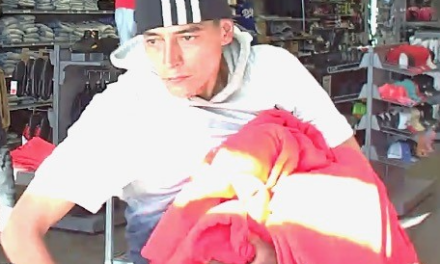Dozens speak out against NROZ, saying it’s not good for environment
Dozens of county residents are pushing back on a zoning ordinance they feel will increase exploration and drilling for gas and oil in Valencia County.
Thirty-plus people spoke in opposition of a proposed change to zoning code that would allow for natural resource overlay zones at the June 1 Valencia County Commission meeting. An additional two dozen letters of opposition were submitted to the commission.
Most who spoke expressed concerns about water use and future water quality, the impact to the environment, as well as overall quality of life, if oil and gas drilling and fracking — hydraulic fracturing — came to Valencia County.
“Drilling in this valley, even exploratory drilling, is a huge risk to the fresh water in our aquifer, as oil and gas — and the ‘produced water’ used in the fracking process — can all seep through the fault lines and into the fresh water aquifer we all drink from,” said Deirdra Velasquez, a representative of local grass roots organization Valencia Water Watchers.
Velasquez said the county sits in the Albuquerque Basin, which consists of layers of sediment and rock with numerous fault lines.
“We urge you not to reintroduce or pass the NROZ ordinance as currently drafted,” she said. “Our limited, precious water would be at risk, and the contaminated water that could result would impact many, many residents of Valencia County.”
The June 1 meeting was the commission’s second go-round with the NROZ. At the May 4 meeting, commissioners approved the overlay zone ordinance on a 3-1 vote. However, the legal advertisement notifying the public about last month’s public hearing for the NROZ was only published once, instead of twice as required by state law and the county’s own ordinance.
Only two county residents spoke during the initial public hearing, and they were at the meeting to speak to the commission on a different issue.
When the NROZ was brought back to the commissioners on June 1 due to the publication error, it was only for consideration to publish the legal ad correctly, which included a repeal of the original May ordinance. The commissioners voted 4-1 to publish.
The special public hearing for the county’s proposed natural resource overlay zone and repeal of the ordinance approved in May will be held at 5 p.m., Thursday July 14, at the Los Lunas Transportation Center, 101 Courthouse Road.
At the June 1 meeting, Los Lunas resident William Maxwell said he’s been involved in the energy industry for 30 years, including fracking in west Texas in the 1970s.
“I’m not against oil and gas. I like driving my car,” Maxwell said. “However, understand in this instance there might be serious risk of groundwater contamination if fracking fluids are injected.”
Maxwell continued, saying he was disappointed in the commission for passing the ordinance in May without proper notification to citizens.
“And I will be disappointed if there are not professional geographic studies done to determine the risk to ground water,” he said. “You can see you’re being watched and we will continue watching you.”
With degrees in physics and biology, county resident Justin Carter asked the commission to consider the scientific merits of moving forward with the NROZ.
“The costs and risks of hydrologic fracturing are very well documented. The benefits are not,” Carter said. “The possible greater economic gains are being given higher priority than the ecosystem. This will have greater consequences than you realize. We expect you to give full consideration before a decision is made.”
Stephanie Russo Baca, the Valencia County board of supervisors member of the Middle Rio Grande Conservancy District, asked the commission to clarify language in the ordinance that excludes the greenbelt from areas an NROZ can be established.
“The language is not specific enough to define the MRGCD-benefited area. The description is inaccurate of the greenbelt,” Russo Baca said. “Since you use MRGCD facility names, I would ask that be corrected.”
County zoning ordinance defines the greenbelt as, “The area of land in the middle Rio Grande Valley, including the land east of the Belen Highline canal up to and including the Chical Highline [sic] canal on the east side of the Rio Grande River.”
There isn’t a Chical Highline in the district’s irrigation system, but rather the Chical Lateral on the east side of the county. While the Belen Highline runs the full north-south length of the county, the lateral ends north of Tomé Hill.
Russo Baca continued, saying in 2019, the oil and gas industry in New Mexico created 163,137 acre feet of “produced water,” the waste water created from drilling and fracking. There are 325,851 gallons in one acre foot, so more than 50 billion gallons of produced water was created that year.
“It cannot be used outside of the oil and gas industry,” the supervisor said. “My questions are: how much water will be used? Where will it come from? And how will the produced water be disposed of?”
After listening to more than two dozen residents express concerns and objections about the overlay ordinance, some members of the commission seemed to interpret the comments as a preference for the county’s current process, which allows land to be zoned as mineral resource.
Commissioner Joseph Bizzell asked county attorney Dave Pato if the NROZ would offer more protections to the community.
“If it’s mineral resource, it stays. With the overlay, they have to specifically put what they want, like a gravel pit,” Bizzell said. “If they stop or sell, that (overlay) goes away. If they don’t do anything in 24 months, it reverts back to the underlying zoning, correct?”
Pato said the overlay zone doesn’t change property’s underlying zoning and creates a mechanism for application of a particular use.
“It’s not forever stuck with mineral resource. It would revert back,” Pato said.
An overlay zone allows for land use and activities on a piece of property without changing the underlying zoning.
For instance, the county has a solar overlay zone that can be placed on existing residential or commercial property for the lifetime of the solar facility. Once the solar field is removed, the underlying zoning and allowed uses return to the original zoning.
Without an overlay, a complete zone change is required for what are considered “heavier” uses, and typically once that use stops, the higher zoning remains, which isn’t always desirable.
Under the county’s current zoning ordinances, allowed uses in mineral resource districts include rock and gravel extraction, rock crushing and exploration for mineral resources, among others. It also allows for a conditional use request for extraction and development of oil, natural gas or geothermal resources.
“It’s very unfortunate people take one thing and turn it into a huge deal when we’re focused on protecting the county,” said Commissioner Jhonathan Aragon.
Murmurs of “No, no it’s huge,” came from members of the audience.
Aragon continued, saying he heard a lot of concern about water, saying the commission has been the protectors of the county.
“I’m seeing this as such a contentious deal,” he said. “This will put an extra barrier for Valencia County, which is unfortunate. I am very much in favor of protecting Valencia County, but if you want to remove that extra step …”
Commission Chairman Gerard Saiz said he also looked at the overlay zone as an extra layer of protection.
“I think the extra layer of protection and other safeguards built in does benefit residents of Valencia County,” Saiz said. “Otherwise drilling can be done with a zone change and it stays. The process is the same if they are applying for an overlay.
“There are two public hearings … one with planning and zoning and one here. But if the public is not in favor of safeguards … I’m inclined to vote no (on publication).”
Commissioners Saiz, Bizzell, Aragon and Troy Richardson voted in favor of republishing the ordinance, while Commissioner David Hyder voted no.
Valencia County: Natural Resource Overlay Zone ordinance (2022)
Julia M. Dendinger began working at the VCNB in 2006. She covers Valencia County government, Belen Consolidated Schools and the village of Bosque Farms. She is a member of the Society of Professional Journalists Rio Grande chapter’s board of directors.

















